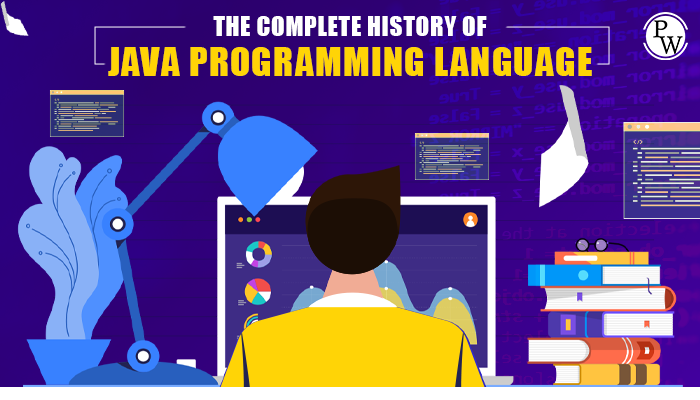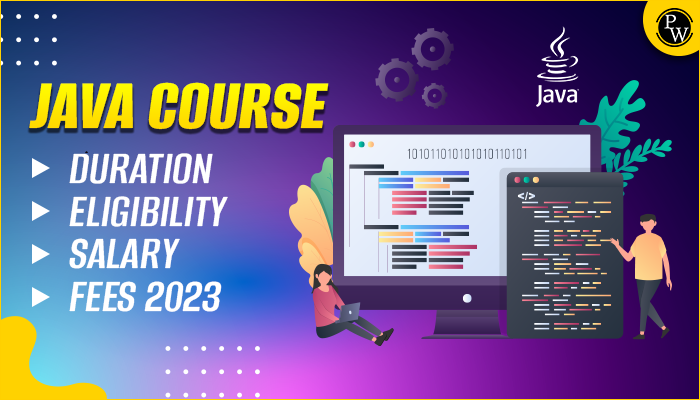History of Java: JAVA was introduced in the 1990s; Java programming language has become one of the world’s largest popular and influential programming languages. Java, a flexible and platform-independent language to build robust and reliable applications, was invented by the Sun Microsystems team led by James Gosling and his colleagues. We will explore Java’s wonderful history and look at its evolution.
History of Java Programming Language
Java programming language continues to have relevance and the Future. In the software development industry, Java continues to be a major force. Due to its flexibility, performance, and extensive ecosystem, it is a perfect choice for many applications, from mobile development on Android to big data processing with frameworks such as Apache Hadoop.
Oracle, the current operator of Java, is working continuously to improve and enhance its language’s future with updates and support for new technologies course is one of the mice demanded languages worldwide for various applications in 2023
Recommended Courses :
- Decode Data Science with ML 1.0
- Decode Full Stack Web Dev 1.0
- Mastering Full Stack Data Analytics
- Full Stack Data Science Pro
- Full Stack Web Development
Origins and Early Development:
Sun Microsystems’s team, with James Gosling as its leader, began working on a “Green” project at the beginning of the 1990s. The group aimed to create a language that can be used on many devices, ranging from little integrated systems to larger-scale computers.
Initially, the project was focused on developing an interactive TV programming language, but when it became apparent that Java programming had potential beyond television, it changed its name to Java.
PW Skills Provide Various Platform
The Birth of Java
JDK Sun Microsystems officially made Java available to the public in 1995. The language’s singular features, such as the principle of “writing one time and running forever,” have attracted immediate attention. The Java Virtual Machine, which allows programs to be executed on any device with a compatible JVM installed, has made this principle possible. Also, Sun Microsystem’s team introduced Java Development Kit with tools to compile, trace and run Java code.
Java Applets
The Rise of the Web introduced Java applets and was one of the most significant events in Java’s history. The applets were simple Java programs that could have been included on a Web site and run by the web browser. This breakthrough allowed developers to create interactive and dynamic web content, which became the Apple craze of the late 1990s.
Java’s expansion into business development
The development community began to explore the possibilities of Java in enterprise applications as it gained popularity. Sun Microsystems introduced Java Enterprise EditionJava EE, a platform for developing scalable and distributed enterprise applications to address this. A complete set of APIs and specifications, such as JavaServlets, JavaServer Pages, and Enterprise JavaBeansWJSP, among others, have been released by Java EE.
The Open Sourcing
Java Sun Microsystems decided in 2006 to make open-source Java programming available under the GNU GPL, a license for free. As a result, an OpenJDK project has been created, and the implementation of the Java Platform is made available for free.
Open-sourcing Java programming has made it possible for a wider community to provide input on its development, leading to more innovation, bug fixing, and performance improvements. OpenJDK is currently being used as a reference implementation for Java.
Java’s Modernization:
Java SE and JavaFX Java have undergone extensive modernization efforts over the last few years. Several new features have been introduced in the Java SE Standard Edition release, including lambda expressions, modularization between JAVA Platform modules, and Stream API, making it easier to process data.
Moreover, JavaFX has been designed to be a modern framework enabling the creation of high-quality applications for both Desktops and Smartphones with improved graphical capabilities.
Also check: 13 Top Core Java Concepts All Java Programmers Need to Know
Java History( version )
Java history version is a record of the different versions or editions of the Java programming language that have been released over time.
To make programming easier and more effective, every new version introduces an improvement, bug fix, or new feature. As Java programming is evolving, developers can benefit from the progress that has been made on each version in creating better software applications.
| Version | Release Date | Major changes |
| JDK Beta | 1995 | |
| JDK 1.0 | January 1996 | |
| JDK 1.1 | February 1997 | Was released on February 19, 1997. There were many additions in JDK 1.1 as compared to version 1.0, such as
A broad retooling of the AWT occasion show Inner classes added to the language JavaBeans JDBC RMI |
| J2SE 1.2 | December 1998 | “Play area” was the codename that was given to this form and was released on 8th December 1998. Its real expansion included: strictfp keyword
the Swing graphical API was coordinated into the center classes Sun’s JVM was outfitted with a JIT compiler out of the blue Java module Java IDL, an IDL usage for CORBA interoperability Collections system |
| J2SE 1.3 | May 2000 | Codename- “KESTREL” Release Date- 8th May 2000 Additions:
HotSpot JVM included Java Naming and Directory Interface JPDA JavaSound Synthetic proxy classes |
| J2SE 1.4 | February 2002 | Codename- “Merlin” Release Date- 6th February 2002 Additions: Library improvements
Regular expressions modeled after Perl regular expressions The image I/O API for reading and writing images in formats like JPEG and PNG Integrated XML parser and XSLT processor (JAXP) (specified in JSR 5 and JSR 63) Preferences API (java.util.prefs) Public Support and security updates for this version ended in October 2008. |
| J2SE 5.0 | September 2004 | Codename- “Tiger” Release Date- “30th September 2004” Originally numbered as 1.5, which is still used as its internal version. Added several new language features such as
for-each loop Generics Autoboxing Var-args |
| JAVA SE 6 | December 2006 | Codename- “Mustang” Released Date- 11th December 2006 Packaged with a database supervisor and encourages the utilization of scripting languages with the JVM. Replaced the name J2SE with java SE and dropped the .0 from the version number. Additions:
Upgrade of JAXB to version 2.0: Including integration of a StAX parser. Support for pluggable annotations (JSR 269). JDBC 4.0 support (JSR 221) |
| JAVA SE 7 | July 2011 | Codename- “Dolphin” Release Date- 7th July 2011 Added small language changes, including strings in the switch. The JVM was extended with support for dynamic languages. Additions:
Compressed 64-bit pointers. Binary Integer Literals. Upstream updates to XML and Unicode. |
| JAVA SE 8 | March 2014 | Release Date 18 March 2014 Language level support for lambda expressions and default methods, as well as new dates and times API based on Joda Time. |
| JAVA SE 9 | September 2017 | Release Date 21 September 2017 Project Jigsaw: design and build a standard to be implemented in the Java SE Platform module system, as well as an implementation of these modules into the underlying platform and JDK. |
| JAVA SE 10 | March 2018 | Released Date- 20th March Addition:
Additional Unicode language-tag extensions Root certificates Thread-local handshakes Heap allocation on alternative memory devices Remove the native-header generation tool – java. Consolidate the JDK forest into a single repository |
| JAVA SE 11 | September 2018 | Released Date- 25th September 2018 Additions-
|
| JAVA SE 12 | March 2019 | Released Date- 19th March 2019 Additions-
|
Also read: Top Java Web Development Technologies You Must Learn In 2023
FAQs
What was the JAVA history first name?
Oak was the original name for Java's programming language.
Who is the father of the JAVA programming language?
James Gosling is the father of Java, a programming language we all recognize and love to work with.
What are the 4 platforms of JAVA?
Java platforms are divided into four editions, Java Standard Edition (Java SE), Java Enterprise Edition (Java EE), Java Micro Edition (Java ME), and JavaFX.
What's the most important purpose of Java?
The Java programming language was first developed as part of a research study that focused on developing advanced software for many types of network devices and embedded systems. The goal was to develop an operating platform that is small, reliable, transportable, and distributed in real time.





